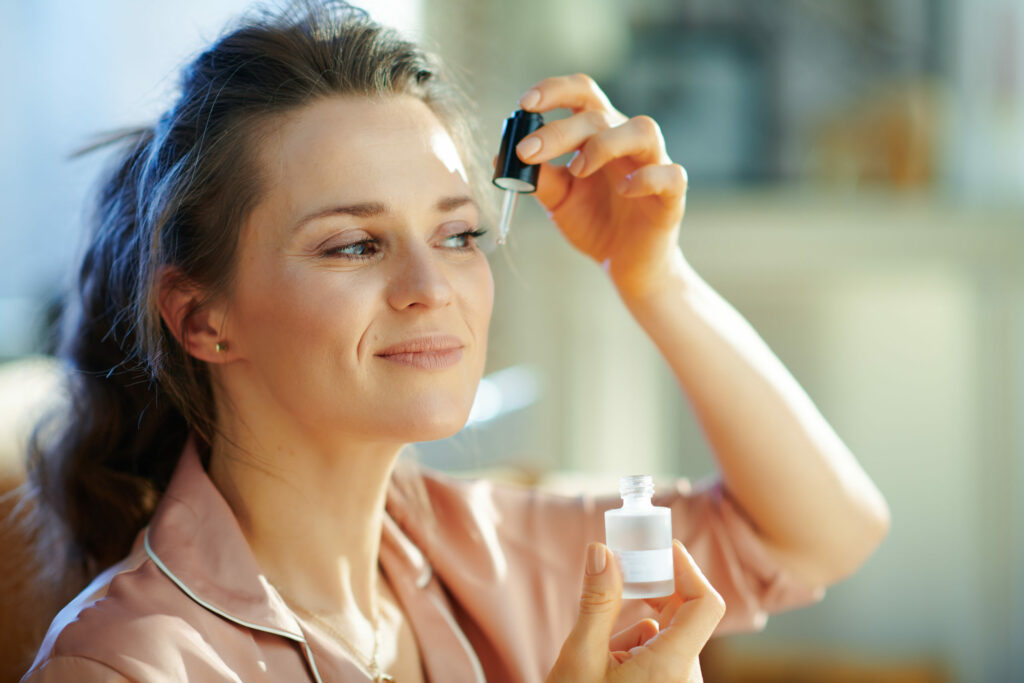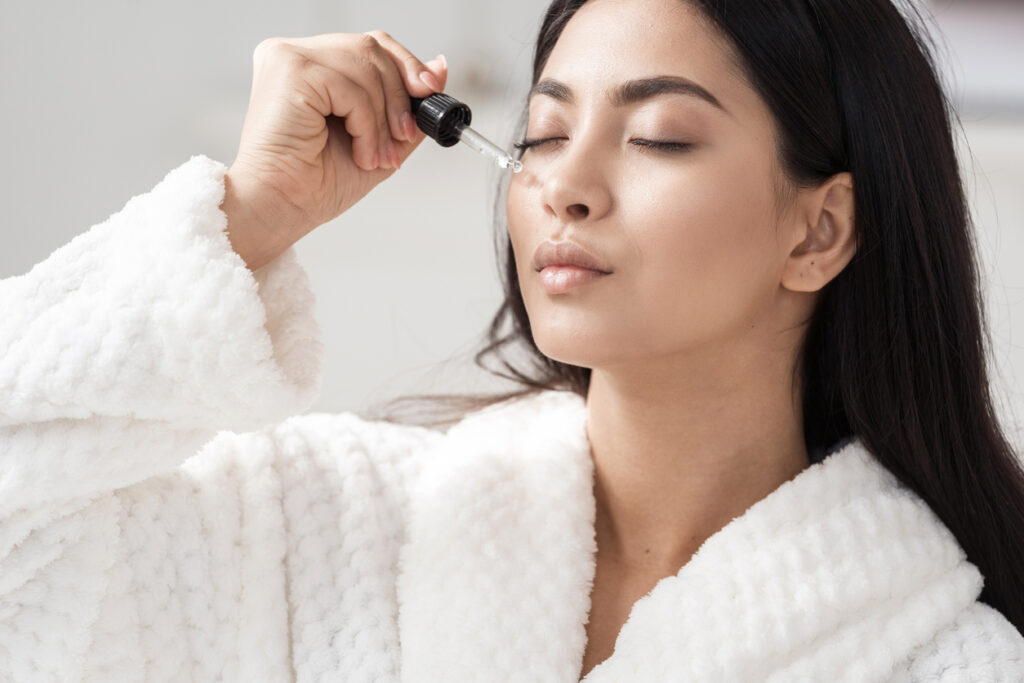Introduction: The Rise of Serums
Over the years, skincare enthusiasts have witnessed the surge in popularity of serums. These lightweight formulations pack a powerful punch, delivering concentrated doses of active ingredients directly to the skin. Unlike traditional moisturizers, serums penetrate deeper, targeting specific concerns and promoting overall skin health.
Understanding Serums: What Sets Them Apart
At the heart of the skincare routine, serums stand out due to their unique texture and composition. They are formulated with smaller molecules, which allows them to penetrate the skin more effectively. This enables the active ingredients to work their magic at a cellular level, addressing concerns like fine lines, wrinkles, dark spots, and more.
The Symphony of Ingredients: Key Components in Serums
Serums are like a symphony of carefully curated ingredients, each playing a specific role in enhancing your skin’s radiance. Ingredients like hyaluronic acid offer intense hydration, while vitamin C brightens and evens out skin tone. Peptides help stimulate collagen production, ensuring a firm and youthful complexion.
Tailoring Serums to Your Skin: Choosing Based on Skin Type
Just as a symphony conductor tailors the performance to suit the audience, choosing the right serum involves understanding your skin’s needs. Whether you have oily, dry, sensitive, or combination skin, there’s a serum that caters to your unique requirements. Customization is key to achieving the best results.
The Art of Application: How to Properly Apply Serums
Applying serums is an art that requires a gentle touch. After cleansing and toning, a few drops of serum should be applied to the face and neck. Patting the serum into the skin promotes absorption. Follow this step with a moisturizer to lock in the benefits and seal the deal for radiant skin.
Enhancing Efficacy: Layering Serums with Other Skincare Products
To create a harmonious skincare routine, it’s essential to understand how serums interact with other products. Layering serums with compatible products can enhance their efficacy. However, it’s important to follow a sequence that allows each product to be fully absorbed and utilized by the skin.
Common Myths and Facts About Serums
As with any skincare trend, serums come with their fair share of myths and misconceptions. Let’s debunk these and get to the facts. Serums are suitable for all skin types, and they won’t make your skin produce excess oil. Instead, they provide targeted solutions without causing imbalances.
DIY Serum Recipes: Nurturing Your Skin Naturally
For those who prefer a hands-on approach, DIY serum recipes offer a chance to customize your skincare routine further. Ingredients like aloe vera, rosehip oil, and green tea extract can be combined to create nourishing serums that cater to your skin’s unique needs.
Serums for All Ages: Youthful Skin at Any Stage of Life
Radiant skin knows no age limit. Whether you’re in your 20s, 40s, or beyond, incorporating serums into your routine can help you maintain youthful and glowing skin. Prevention is key, and serums packed with antioxidants and collagen-boosting ingredients can be your best allies in the fight against aging.
Addressing Specific Concerns: Anti-Aging, Hydration, and More
Different serums address different concerns. If you’re battling fine lines and wrinkles, look for serums containing retinol or peptides. For hydration, hyaluronic acid-rich serums are a go-to. Those dealing with acne or dark spots can benefit from serums with niacinamide or vitamin C.
Decoding Skincare Labels: Ingredients to Look For and Avoid
Navigating the world of skincare labels can be overwhelming. Look for key ingredients like antioxidants, peptides, and ceramides. Avoid products with excessive fragrances and harmful additives. Understanding labels empowers you to make informed choices that align with your skin’s health.
The Future of Skincare: Innovations in Serum Technology
As technology advances, so does skincare. The future of serums promises even more targeted and personalized solutions. From 3D-printed skin-compatible ingredients to DNA-based serums, the possibilities are endless, offering hope for more effective and efficient skincare regimens.
Environmental Impact: Sustainable Serums and Eco-Friendly Packaging
With increasing environmental awareness, sustainable skincare practices are gaining prominence. Many brands are adopting eco-friendly packaging and sourcing ingredients responsibly. Supporting such initiatives not only benefits your skin but also contributes to a greener planet.
Unlocking Your Skin’s Potential: Transformative Benefits of Consistent Serum Use
Consistency is the key to unlocking the full potential of serums. Just as practicing an instrument leads to mastery, using serums regularly yields transformative results. Over time, you can expect improved texture, enhanced radiance, and a complexion that exudes vitality.
Conclusion: Your Path to Glowing and Radiant Skin
In the grand symphony of skincare, serums take center stage, delivering notes of nourishment and transformation to your skin. With their concentrated formulas and targeted solutions, they hold the power to enhance your natural radiance and boost your confidence.
FAQs
Q1: Can I use multiple serums in my routine? A: Yes, you can layer serums, but ensure they are compatible and applied in the correct sequence for optimal results.
Q2: How often should I use a serum? A: Most serums can be used once or twice daily, depending on the ingredients and your skin’s tolerance.
Q3: Can serums replace moisturizers? A: Serums are meant to complement moisturizers, not replace them. They provide concentrated treatment, while moisturizers lock in hydration.
Q4: Are serums suitable for sensitive skin? A: Yes, there are serums formulated specifically for sensitive skin types. Look for soothing ingredients like chamomile or centella asiatica.
Q5: At what age should I start using serums? A: It’s never too early to start using serums as a preventive measure. However, the mid-20s is a common age to introduce them into your routine.




